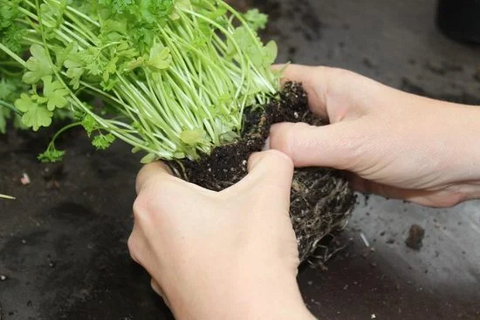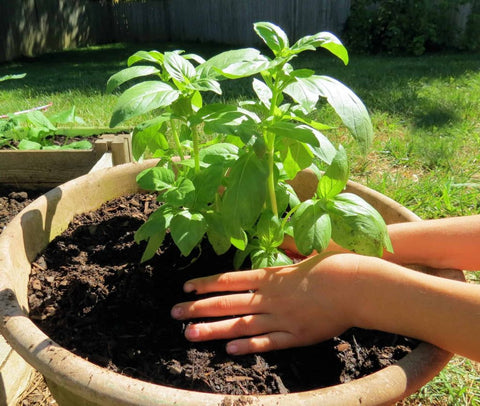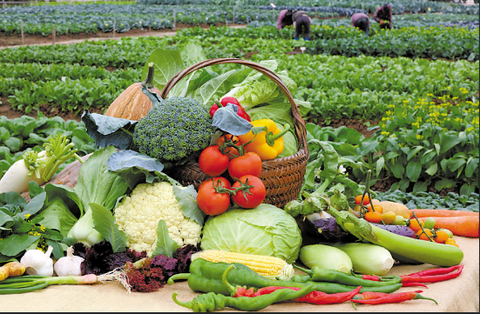Cover cropping is a well-established practice in traditional gardening, but it's equally valuable in raised bed gardening. Raised beds offer numerous benefits, including improved drainage and control over soil quality, but they can also present unique challenges. Cover cropping is an effective solution to enhance soil health and address these challenges. In this blog, we will delve into the concept of cover cropping in raised beds, its benefits, and how to get started.The following content also has some reference value for raised garden beds.

Understanding Cover Cropping
Cover cropping involves planting specific crops during periods when your raised bed is not actively in use for your main crops. These cover crops serve multiple purposes:
- Soil Erosion Prevention: Cover crops shield the soil from erosion caused by wind and water. In raised beds, which often have loose soil, this is especially important.
- Weed Suppression: By occupying the space and competing with weeds, cover crops help control weed growth, reducing the need for manual weeding.
- Soil Improvement: Different cover crops offer various soil benefits. Some increase organic matter, fix nitrogen, or break up compacted soil, ultimately improving soil structure and fertility.
- Nutrient Fixation: Certain cover crops, like legumes, have the unique ability to fix atmospheric nitrogen into a form plants can use, enriching the soil with this vital nutrient.
- Pest and Disease Management: Some cover crops can deter or disrupt the life cycles of pests and diseases.
Choosing the Right Cover Crops
The success of cover cropping in raised beds depends on selecting the right cover crops for your specific needs and the time of year. Here are some common options:
- Legumes (e.g., clover, vetch): These nitrogen-fixing plants enrich the soil with nitrogen and improve its fertility. They are suitable for raised beds in need of a nitrogen boost.
- Grasses (e.g., rye, wheat): Grass cover crops are excellent for weed suppression and erosion control. They also add organic matter when turned into the soil.
- Mustard and Radish: These cover crops are known for their ability to break up compacted soil, improving aeration and root penetration.
- Buckwheat: A fast-growing cover crop that suppresses weeds and attracts pollinators with its flowers.
- Crimson Clover: An excellent cover crop for fixing nitrogen and adding organic matter to the soil.

Planting and Managing Cover Crops
Now that you've chosen the right cover crop for your raised bed, it's time to get planting:
- Timing: Plant cover crops during periods when your raised bed is not in use for your main crops. In many regions, this often means planting cover crops in the fall or early spring.
- Preparation: Before planting, clear the raised bed of any debris, weeds, or remnants of previous crops. Loosen the soil to prepare it for the cover crop seeds.
- Seeding: Follow the recommended seeding rate for your chosen cover crop. Depending on the type of cover crop, broadcast the seeds evenly across the raised bed.
- Covering Seeds: Lightly rake the soil to cover the seeds at the appropriate depth. This ensures good seed-to-soil contact for germination.
- Watering: Provide adequate moisture for germination. Water your cover crop as needed until it becomes established.
- Maintenance: As your cover crop grows, keep an eye on it. Some cover crops might need occasional trimming to prevent them from becoming too tall or seedy.
Incorporating Cover Crops into Your Raised Bed Garden
The benefits of cover cropping in raised beds extend beyond soil improvement. Here's how you can make the most of it:
- Rotating Crops: Plan your raised bed gardening by rotating your main crops with cover crops. This practice can help manage pests and diseases while improving soil quality.
- No-Till Gardening: After your cover crop has served its purpose, you can choose to leave it in place. A no-till gardening approach involves planting your main crops directly into the cover crop residue. This can further improve soil health and reduce the disruption of beneficial soil organisms.
- Mulching: If you decide to turn your cover crop into the soil, use the plant material as mulch. It will break down over time, adding organic matter to your raised bed.
- Seed Saving: Consider saving seeds from your cover crops for future plantings. This can be a cost-effective and sustainable way to ensure a supply of cover crop seeds.
- Record Keeping: Keep track of your cover cropping schedule and the specific cover crops used. This information can help you plan your raised bed garden more effectively in the long term.

Conclusion
Cover cropping in raised beds is a valuable technique that can contribute to the overall success of your gardening endeavors. By selecting the right cover crops and integrating them into your raised bed gardening practices, you can enhance soil health, suppress weeds, and improve your crop yields. Furthermore, adopting sustainable gardening practices, such as no-till gardening and seed saving, can make your raised bed garden even more eco-friendly. So, consider cover cropping as a powerful tool to maximize the potential of your raised bed garden while minimizing its challenges.









